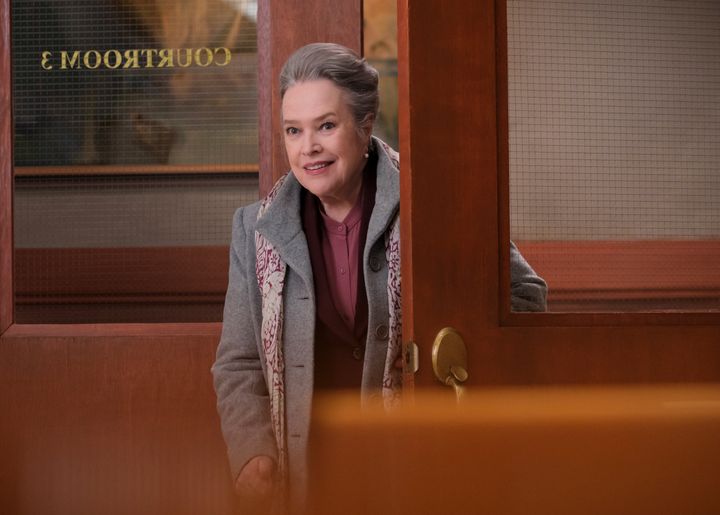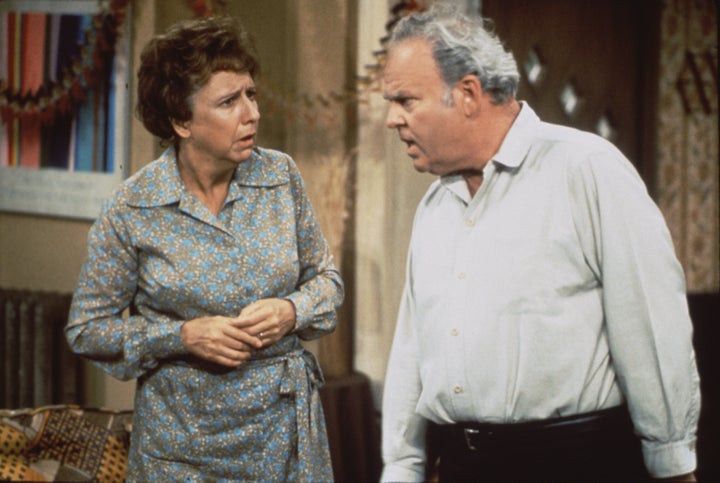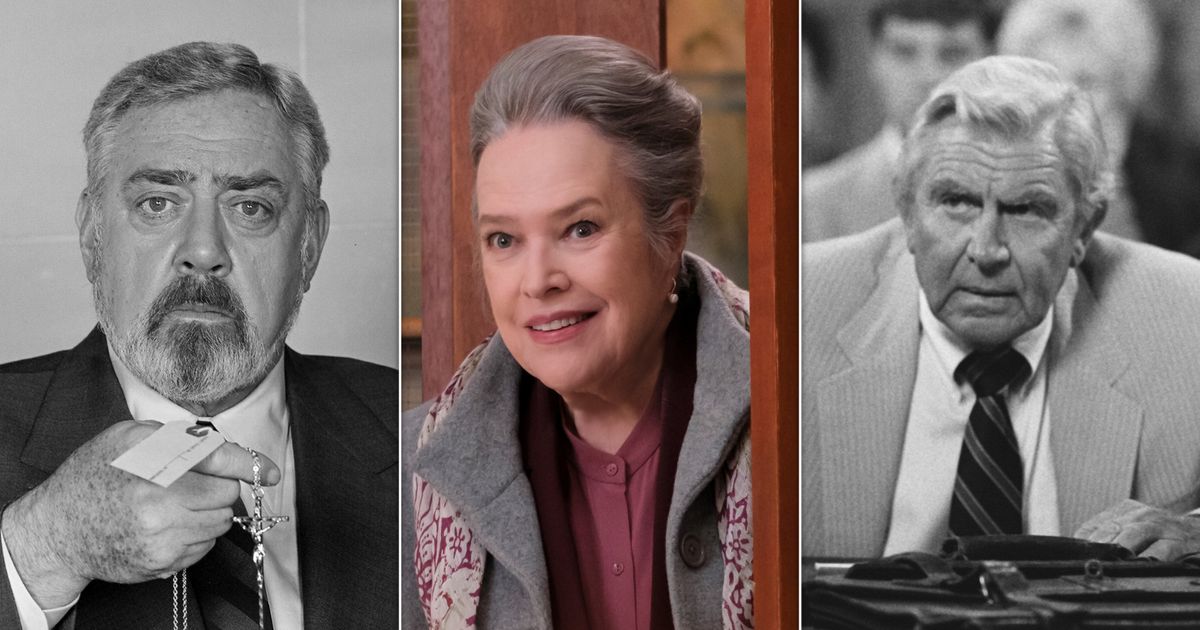When CBS gave us a sneak peek of the rebooted “Matlock” with Kathy Bates in September, one of the first TV references in the episode was to the iconic 1950s show “Perry Mason.”
“Nice? Don’t tell me to be nice,” Sarah (Leah Lewis) tells her colleague Billy (David Del Rio), after their boss tells them to bring Matty (Bates) up to speed at the law firm. “I need to be trained by senior partners, not by senior citizens. No offense, Perry Mason.”
It’s an appropriate line. In the premiere of the new “Matlock,” Bates’ character — based on the original role made popular by Andy Griffith in the ’80s and ’90s — takes cues from Mason’s often tricky legal maneuvers. As a Bates fan, I’ve watched the special premiere episode twice and was so intrigued by the writers’ clever use of the old “Matlock” premise with a new idea. She’s sneaky like Griffith’s character but in a way that keeps you intrigued to find out what’s next.
On Thursday night’s new episode, we get a deeper look at Bates’ Matlock character, who has a secret back story. Her reason for working for the law firm is to discover which of three attorneys helped a pharmaceutical company escape responsibility for the opioid epidemic — an epidemic that killed her only daughter. While this episode deals with some tropes of ageism, the Matlock character, like Griffith before her, uses her wiles to uncover case-solving clues. She says, “I’m just a harmless old lady,” while her stealth proves that she is anything but harmless to the criminals.
Audiences can draw a straight line from the new CBS show through to the original “Matlock” to “Perry Mason.” “Perry Mason,” whose titular attorney defends falsely accused people in every episode, was originally a 15-minute radio program from 1943 to 1955, based on the books by Erle Stanley Gardner, before premiering on TV in 1957. The original “Matlock” series, which aired from 1986 to 1995 was compared to the Mason show, as they were both written by television producer Dean Hargrove. After the successful CBS show, multiple reboots have updated “Perry Mason,” including an HBO series that began in 2020 and lasted two seasons.

CBS Photo Archive via Getty Images
The new “Matlock” broke viewing records for CBS, according to The Hollywood Reporter. Even with so many options on digital streaming platforms, it’s apparent that audiences still love shows that fill them with a sense of nostalgia.
I never saw an original episode of “Perry Mason”; I was too young, yet I’ve been watching the reruns since I went to college and bonded with friends over our mutual love for all things Raymond Burr.
Most of our college group watches reruns of the show frequently. Of course, we all know every line of every episode after 40 years. And what draws me to my favorite episodes are weird little funny details, as in “The Case of the Laughing Lady.” Perry has Della fetch a reference book that contains a clue. The book’s author is Mordecai Rapahannock Terwilliger Sr., a ridiculous name and a funny detail we remember.
In the early television series, Perry’s legal pranks win every case. That the murderer, never Perry’s client, usually confesses in the courtroom is beside the point. “Perry Mason” viewers love shots of urban Los Angeles, the flashy automobiles of the 1950s, Della’s (Barbara Hale) classic wardrobe and handsome detective Paul Drake (William Hopper). Luckily for me, “Perry Mason” lives on on digital streaming platforms such as Me-TV, Pluto, Freevee and Paramount+.
One of my favorite aspects of the show is seeing the deep dive into the old Los Angeles, the plethora of convertibles, mid-century houses and clothing, and Perry’s logic in solving a case that generally has to be explained to the viewers by Paul Drake at an episode’s end.
We’ve been watching with friends since college. But I have always wondered why so many audiences are obsessed with nostalgia, especially via old TV shows.
“What is special about vintage TV is the same about collectibles or memories,” said Krystine Batcho, Ph.D., a professor of psychology at Le Moyne College who has studied nostalgia for three decades. “Some people think of this time as chaotic. In times of disagreement and dissent, nostalgia peaks. COVID was an example of what stimulates nostalgia.”
“Vintage TV wants to slow you down,” Batcho continued. “I can watch ‘Cheers’ or ‘Friends’ and then come back to the real world.”
Each fall, more new shows come from old places. CBS is also reviving “Hollywood Squares,” the popular game show that aired from 1966 to 1980. Nate Burleson is set to serve as the host of the new version, with Drew Barrymore appearing in the center square, Deadline reported.
CBS must be on to something with its programming, as last season it finished a 16-year run as No. 1 among the broadcast networks, currently averaging 5.59 million viewers per night in primetime, according to Nielsen data. This bests a CBS record of 15 years in the ’50s and ’60s, when “Perry Mason” originally aired.
Batcho, whose favorite classic show is “St. Elsewhere,” originally wrote about nostalgia in 1995 when she published data on how people of various ages respond to the past. She learned that people who enjoy nostalgia tend to be deeply emotional, joyful or sad when exposed to the past.
Her data also showed that people are not necessarily more nostalgic as they grow older. Instead, it’s periods of life transitions, like retirement age and the years between adolescence and full-blown adulthood, that are the primary times when people are engaged in looking back.
“The biggest changes in our lives occur at developmental points,” she said. “It’s a huge tradeoff, shaking off the unconditional love of childhood for freedom and independence. That’s why nostalgia bumps at puberty; the second bump is obvious, facing retirement, death and the great unknown.”
My family, when I was a teen, didn’t miss “All in the Family” on our RCA floor model color television. I remember how much of a big deal everyone made about the series. It ran on CBS from 1971 to 1979 and told the story of Archie (Carroll O’Connor) and Edith Bunker (Jean Stapleton), a working-class family in Queens. “All in the Family” was noted for covering taboo topics like homosexuality, racism, anti-semitism, women’s liberation, religion and the Vietnam War.

CBS Photo Archive via Getty Images
“Vintage TV just represents a form of remembering what the past was like and what people back then watched,” Batcho said, referencing “Gunsmoke” and “All in the Family.” “Scholars will try to figure out why people watched, and vintage TV will always exist as a source of information.”
In a famous episode, Archie (Carroll O’Connor) and Edith (Jean Stapleton) attend the funeral of Edith’s cousin. Edith slowly realizes as she talks with her late cousin’s roommate that the roommate and the cousin were more than friends. Edith’s new understanding that they were lesbian partners is one of the more sensitive ways the topic has been handled on TV, and that was more than 50 years ago.
The show also got its own reboot treatment, in a way: In 2019, an episode was revived onstage with a new cast for ABC’s “Live In Front Of A Studio Audience” two-hour special with Woody Harrelson, Marisa Tomei and Wanda Sykes starring.
Support Free Journalism
Support HuffPost
Already contributed? Log in to hide these messages.
But I, the long-term lover of Raymond Burr, still have unanswered questions about “Perry Mason.” Will Perry and Della ever hook up? Will Perry ever get caught in one of his tricky situations where he prefaced, ‘Suppose I told you that?’”
In the meantime, I’ll keep watching Bates and crew in the rebooted “Matlock” for its fun and compelling storylines, with references to yesteryear and a plot for a new generation.
“Matlock” airs Thursdays at 9 p.m. ET on CBS.

